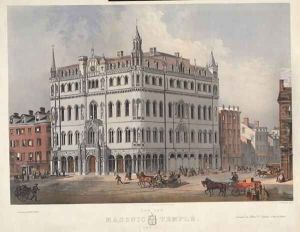Wheelock, Merrill G. Paintings
Merrill G. Wheelock was an American architect, born in 1822 in Concord, Vermont. He was primarily known for his work during the mid-19th century, which included designs for public buildings, churches, and private residences, predominantly in the Gothic Revival style. Although not as widely recognized as some of his contemporaries, Wheelock made notable contributions to the architectural landscape of his time.
After completing his initial education, Wheelock moved to Boston, Massachusetts, where he began his career in architecture. He worked for a time with the renowned American architect Richard Upjohn, who was a leading proponent of the Gothic Revival style in the United States and the founder of the American Institute of Architects. This association with Upjohn greatly influenced Wheelock's architectural style and preference for Gothic Revival.
Wheelock's works include a number of churches in New England. Perhaps his most significant commission was for the design of the Vermont State Asylum for the Insane (now known as the Brattleboro Retreat), established in 1834. This facility was among the first of its kind in the United States, designed to provide humane treatment for individuals with mental health issues. Wheelock's design reflected the therapeutic ethos of the time, incorporating long, rambling structures with varied rooflines and ample windows, intended to create a healing environment through exposure to natural light and air.
Despite his professional accomplishments, Merrill G. Wheelock did not enjoy the same level of fame as some of his contemporaries. His career was cut short when he died at the relatively young age of 44 in 1866. While his body of work was not extensive, his contributions to the Gothic Revival movement in America and his commitment to creating thoughtful, humane public architecture secured him a place in the annals of 19th-century American architecture.
